Agua Amarga, a charming, small, unspoilt fishing village in the Cabo de Gata, in the municipality of Nijar, Almeria province, Andalucia
By Nick Nutter | Updated 11 Apr 2023 | Almería | Villages |
Login to add to YOUR Favourites or Read Later
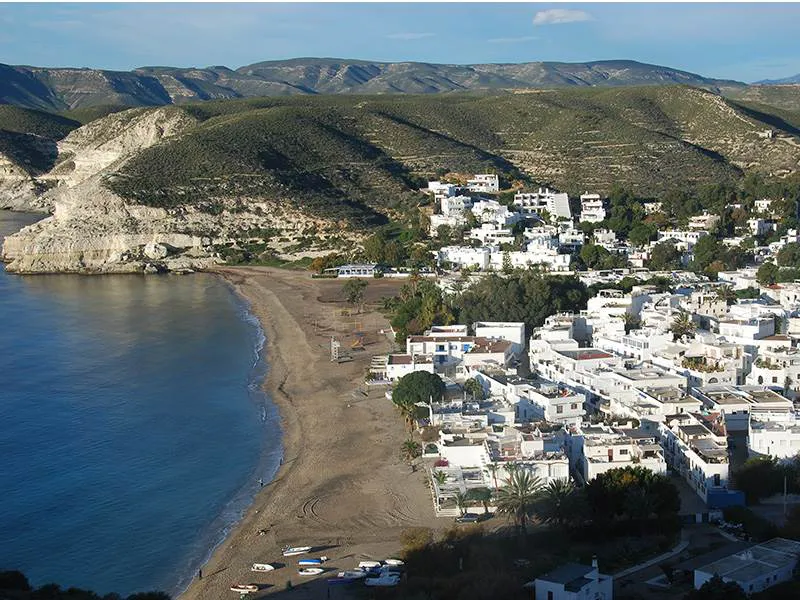
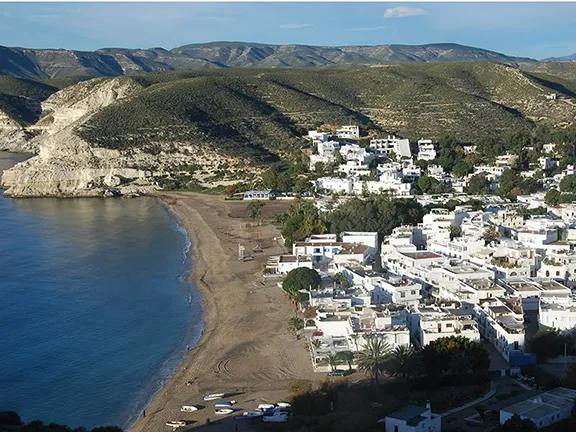
Agua Amarga from the Cargadero de Mineral headland
If you are looking for a totally unspoilt white village with spectacular sea views, stunning scenery, largely undiscovered by tourists, where you can eat fish in a restaurant that owns the fishing boat, then Agua Amarga is for you.
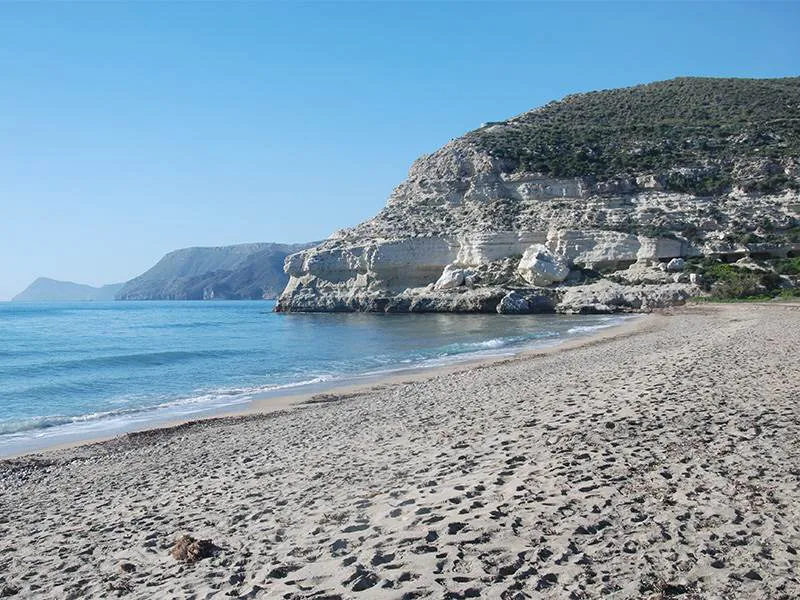
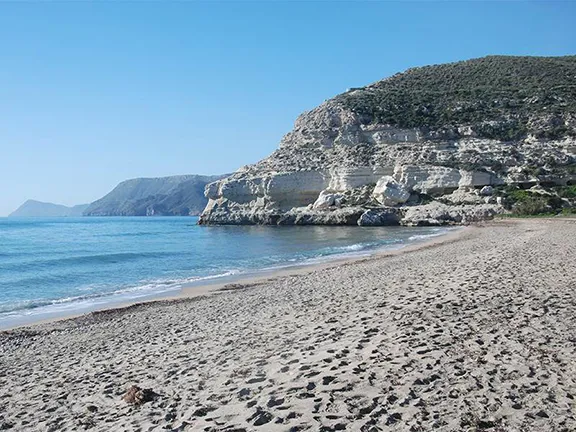
The beach at Agua Amarga
Do not expect night clubs and discos. A couple of small bars are the social heart of the town, in winter there is only one. It is very peaceful. During the summer there are also some ‘chic’ boutiques, and that is it. There is not even a harbour. The fishing boats are pulled up on to the sand, sheltered by the cliff at the northern end of the beach. In a bay sheltered by cliffs to the north and south, the beach is clean, soft sand with crystal clear water between.
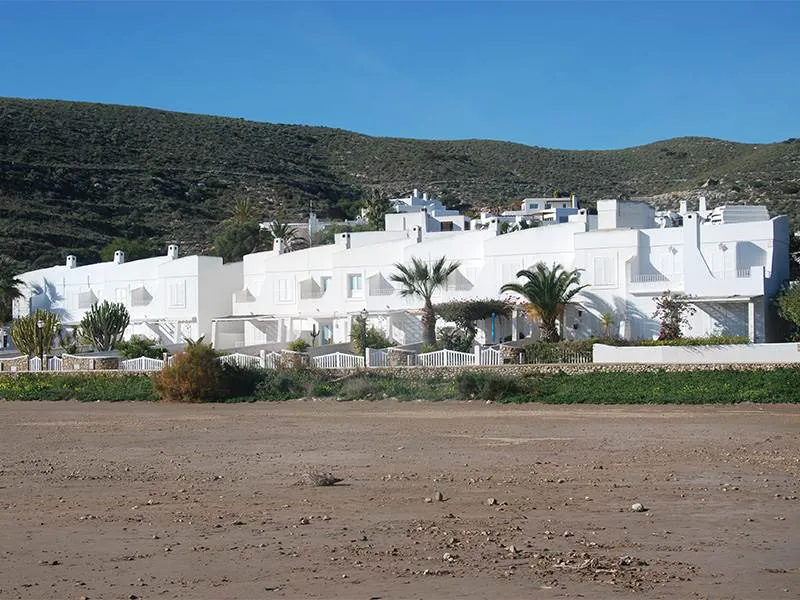
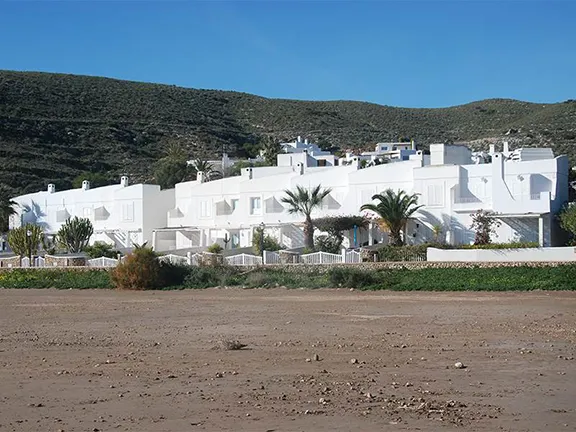
Holiday apartments at Agua Amarga
The town is being found by the trendier crowd. Alongside the boutiques, in summer you will also find a few fashion and accessory shops and some untraditional healthy eating and fusion restaurants.
The village has a few holiday apartments and villas and a small seasonal hotel.
Agua Amarga by the way, translates as 'Bitter Water'. The name came about back in the 19th century when the town was very small and its wells were contaminated by chemicals from the nearby mining works. Today the water is as fresh and pure as you could wish.
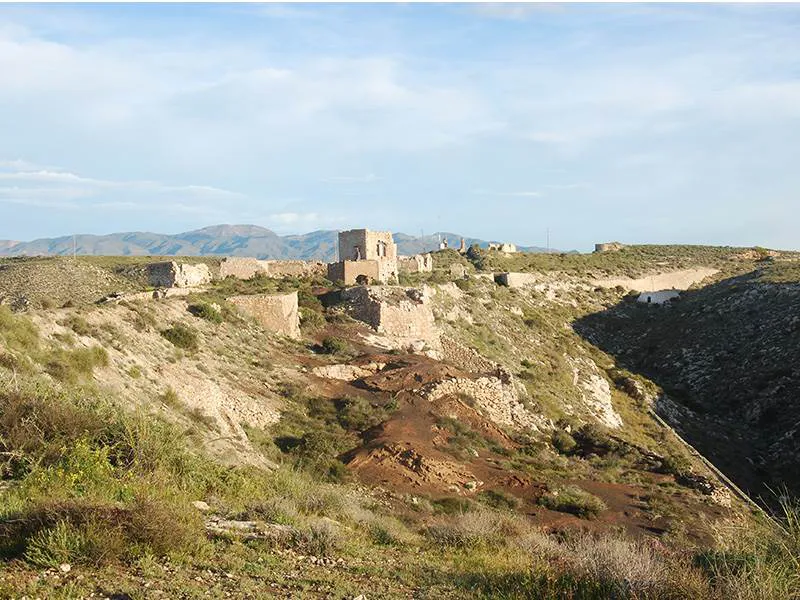
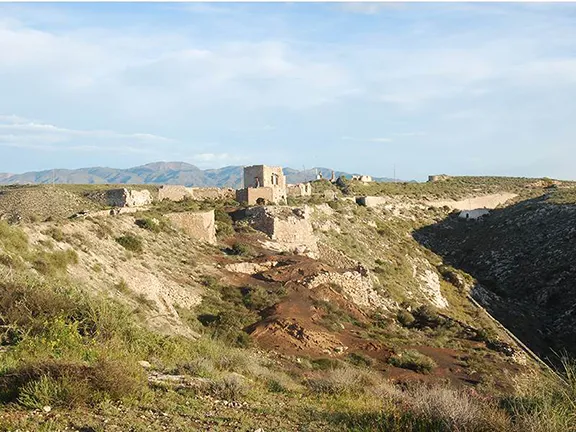
Cargadero de Mineral superstructure
On a headland 500 metres north of Agua Amarga you can see the terminus of a mineral railway line and the remains of the ship loader at the end of the line. For those that venture up there, the views across Agua Amarga are amazing and you will be amazed by the extent of the operation set up back in the 19th century.
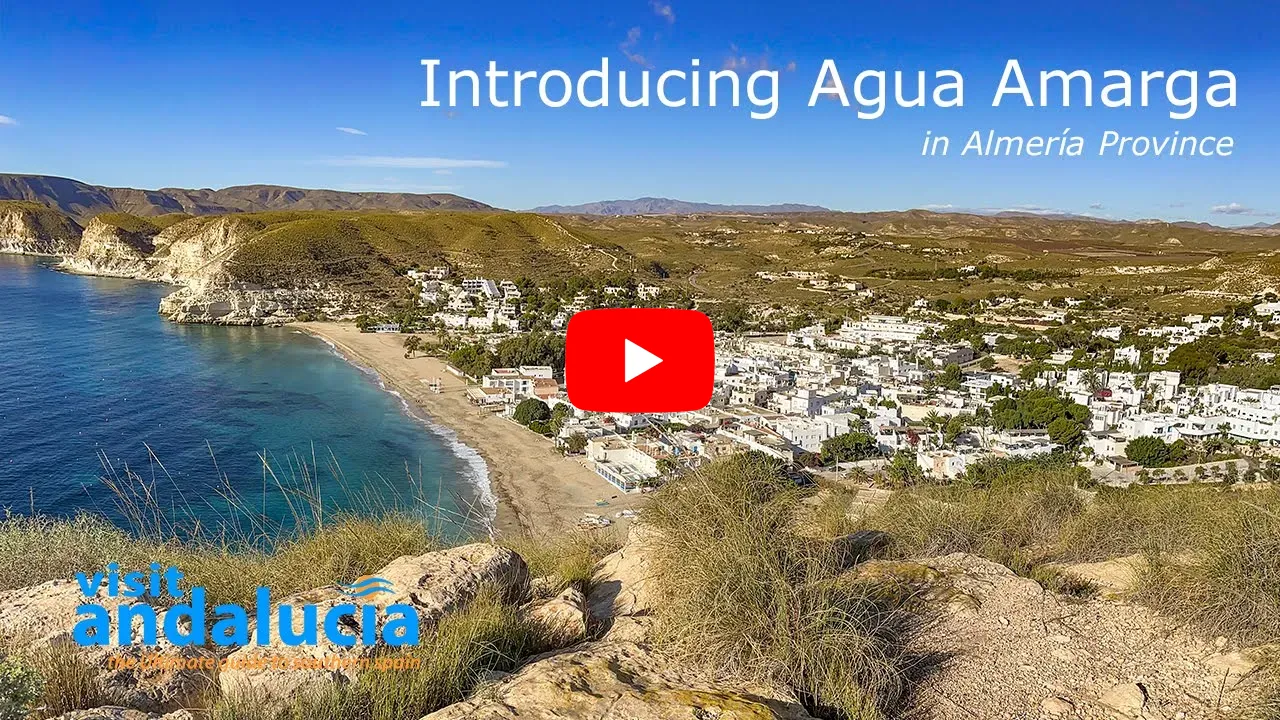
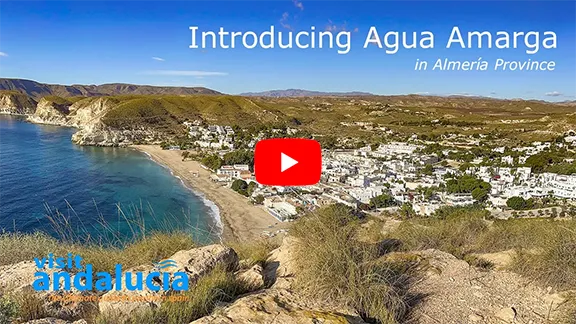
Video By: Julie Evans
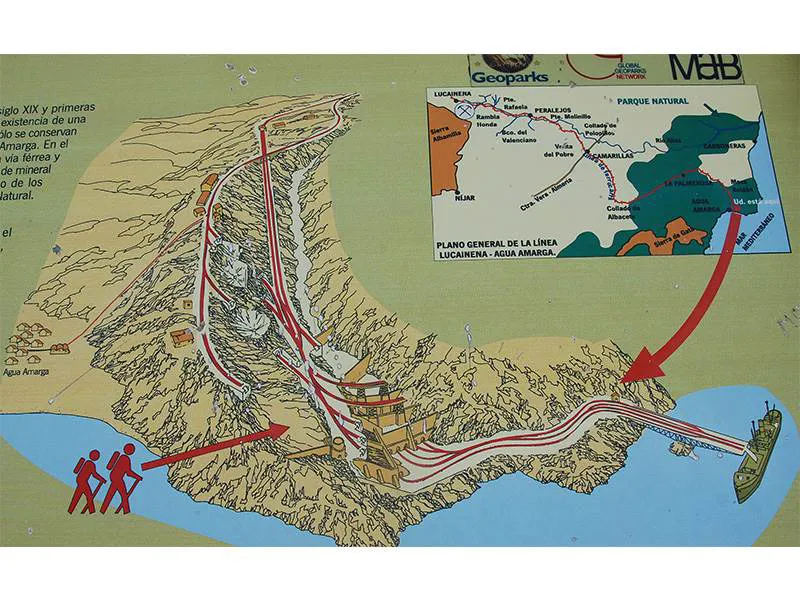
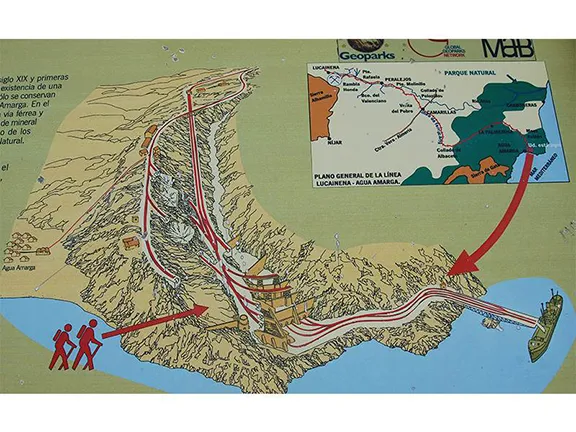
Cargadero de Mineral schematic
All along the Almeria coast there are the remains of mining works and related activity. The ore would be mined inland and transported to the coast. Sometimes, depending on the metal within the ore, it was smelted at the coast and the products then loaded on to a ship. Other ores required smelting at specialised foundries situated elsewhere. Sometimes the ship ran onto the beach, sometimes there was a pier or even, as at Almeria city, a proper harbour. The method by which the ore was transported to the coast varied from humans and donkeys, as occurred at Rodalquilar, to road transport, as is happening to this day at Carboneras, to aerial runways where buckets were slung beneath cables, as happened at Villaricos, to mineral railway lines.
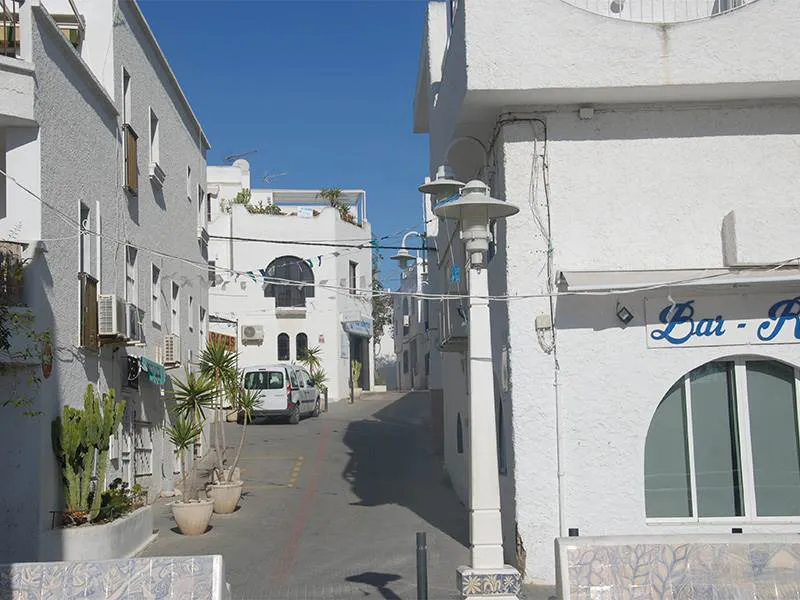
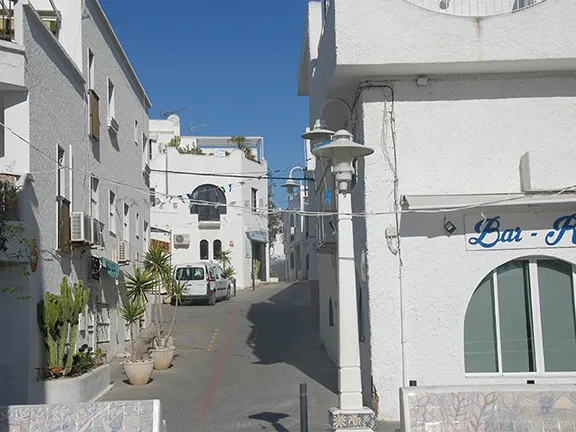
Agua Amarga in winter
It is difficult to imagine today how Agua Amarga, with its sparkling white streets, would have looked in the 19th century. The railway line at Agua Amarga ran from Lucainena de las Torres, an iron ore mine, some 30 kilometres inland. It was built in 1896 by the Compañia Minera de Sierra Alhamilla, who chose Agua Amarga as the site of its ship loading operations due to its sheltered bay. On arrival at Agua Amarga, the ore was transferred to an iron jetty and from there to the ship. Although profitable in its early years, by the 1920s it was starting to lose money. The mine was closed altogether during the Spanish Civil War after the workers took control. Re-opened after the war it could not be made profitable and the last ship, the steamship Bartolo, loaded ore in 1942.
Supplies to the mine were brought by ship and made the return journey up the headland and back to the mine. A coal store can still be seen on the beach and, if you look up to the headland, you can still see traces of the cable operated, wagon lift that, using a static engine, pulled small cargo wagons up to the top at which point the contents would be transferred to the railway wagons.
For film buffs. In the 2000 Netflix series, Sexy Beast, Gal's luxury villa stands at the end of Calle Ferrocarril Minero, on the east side of the village of Agua Amarga. Don't worry – it's not usually plagued by tumbling boulders.